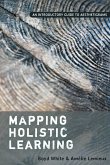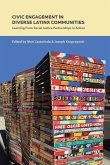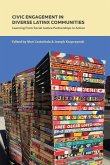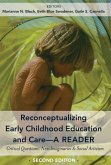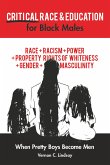Mapping Holistic Learning: An Introductory Guide to Aesthetigrams introduces the concept of aesthetigrams. These are participant-produced visual maps of aesthetic engagement. The map-making strategy was originally developed by one of the authors, Boyd White, to assist him in understanding what his university-level students were experiencing as they interacted with artworks. Such interactions are, after all, private, individualistic, and fleeting. How can a teacher foster student/teacher dialogue that might lead to enhanced engagement, much less do research, without a concrete record of such engagement? Aesthetigrams provide that record.
Recently, the strategy has been adapted to other fields of study-the teaching of literature, and philosophy for children, as well as the writing of poetry. Boyd White and Amélie Lemieux are persuaded that the strategy could be expanded into other disciplines. For example, might it not be useful for a teacher to know what a student is feeling and thinking as she struggles with a mathematical concept?
Mapping Holistic Learning is divided into three sections. Chapter 1 addresses the theoretical framework that underpins the authors' research. The second section, Chapters 2 to 5, provides examples of aesthetigram usage within the formal education environment, in art and literature classrooms. The third section, Chapters 6 and 7, introduces two recent experiments in informal settings-one in an adult poetry workshop, the other in a philosophy-for-children workshop. It is not necessary to follow the book in chronological order. Readers are invited to attend to the chapters that most closely address their individual interests.
Recently, the strategy has been adapted to other fields of study-the teaching of literature, and philosophy for children, as well as the writing of poetry. Boyd White and Amélie Lemieux are persuaded that the strategy could be expanded into other disciplines. For example, might it not be useful for a teacher to know what a student is feeling and thinking as she struggles with a mathematical concept?
Mapping Holistic Learning is divided into three sections. Chapter 1 addresses the theoretical framework that underpins the authors' research. The second section, Chapters 2 to 5, provides examples of aesthetigram usage within the formal education environment, in art and literature classrooms. The third section, Chapters 6 and 7, introduces two recent experiments in informal settings-one in an adult poetry workshop, the other in a philosophy-for-children workshop. It is not necessary to follow the book in chronological order. Readers are invited to attend to the chapters that most closely address their individual interests.
"This book has at its core art and aesthetics. It is beautifully written prose about the use of aesthetigrams, and other arts-based and creative approaches, with both under and post-graduate students. The method and way of thinking with aesthetigrams allows students and researchers to visually map their individual interactions with art, aesthetics and philosophy. A theoretical, strong text, the book provides accessible and practical implications for the use of aesthetigrams across a range of contexts. Boyd, for example, shares his experiences teaching in higher education whereby students, who come from a range of personal, social and cultural backgrounds, are encouraged to utilise their own capabilities to perceive art and aesthetic experience. Through the use of aesthetigrams students reflect, ponder and 'feel/smell/taste' art. Later in the text, another example with a focus on poetry shows the powerful results of such reflective and reflexive approaches. Lemieux applies the method in a secondary school classroom context in relation to literature. Students are requested to respond to a literary play through ekphrastic writing as well as aesthetigrams. Students show deeper understandings of artistic works as a result of the methods outlined in this text. I would recommend other educators who work in similar areas to embrace this book. While the ultimate goal is for students to appreciate and critique art, what happens in reality is their own personal transformations in 'living,' 'engaging,' 'being in flow' and 'becoming wide-awake.'" -Georgina Barton, Associate Professor of Literacies and Pedagogy, University of Southern Queensland


